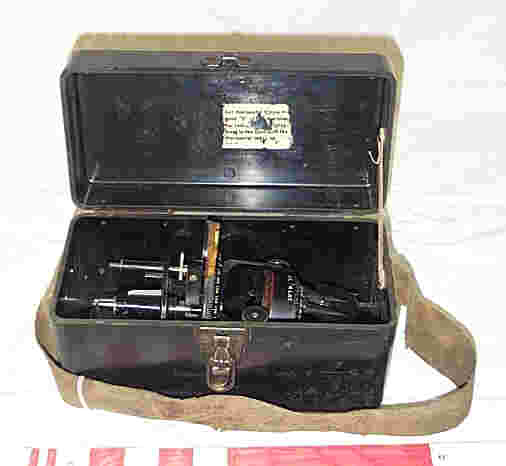Ever wondered how pilots navigated the skies in the days before satellites and GPS? How they navigated without paper maps and only a compass for guidance? The answer is this month’s From the Vault item: an astrocompass.
There are many different styles of astrocompass but all have the same basic components. Each astrocompass consists of a base plate marked with the points of the compass. A mechanism called an equatorial drum is mounted on top. On this drum is a set of adjustable sights and a scale of declination used to track the movement of astronomical bodies such as the sun or the moon.
To use the astrocompass, the baseplate is first leveled with the horizon and then pointed in whatever direction the pilot thinks North is. Then, the pilot tilts the equatorial drum in relation to this base according to local latitude. Once that is done the sights are set based on the local hour angle of the astronomical body using an astronomical table for reference. Once those settings have been made, the navigator would simply position the compass until the astronomical body is within its sights to gain an accurate reading of what direction they were heading in. Until the use of GPS became prevalent, astrocompasses were the preferred method of navigation for pilots because of their accuracy and reliability.
The astrocompass in the collection of the Sam Waller Museum was once owned by the Lamb family and was donated by Donald Lamb in 2001. The Lamb family, aka the flying Lambs, played a pivotal role in introducing aviation to Northern Canada and opening up many rural communities that were previously accessible only by boat or dog sled. Back when Lambair was founded in 1934, there were no GPS or satellite systems to help the Lambs navigate the North, nor were there very many maps. Relying on his astrocompass, Tom Lamb would have to either add to existing maps or create new maps as he flew to these remote communities and then rely on them to fly home. Even after new technology rendered the astrocompass obsolete, the Lambs always kept one in each plane “just in case”
*Image is of a black metal box with an army green strap. Inside is a device that looks like a camera lens with numerous dials and markings to calibrate the compass*


